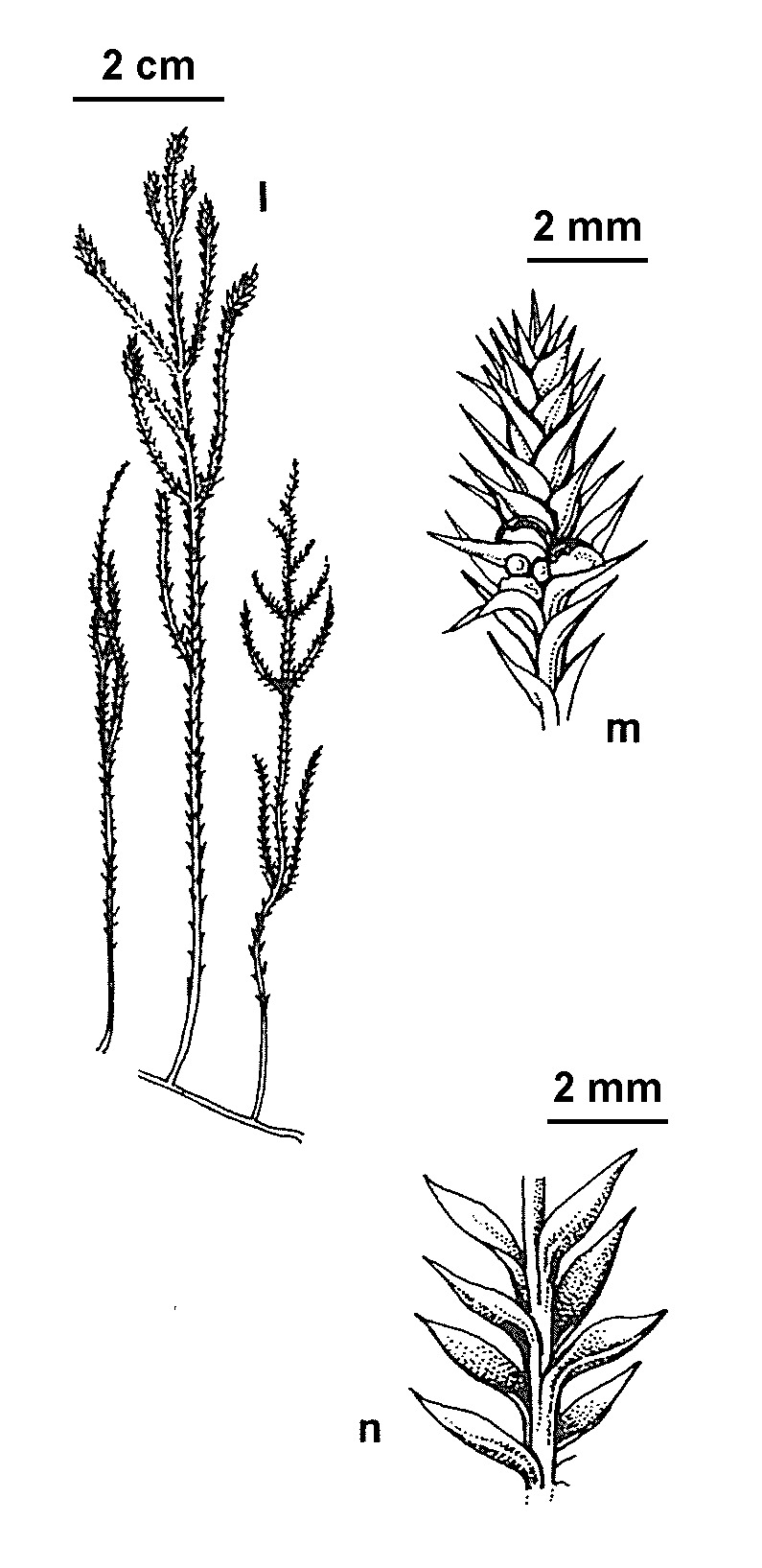Selaginella uliginosa
(Labill.) Spring Swamp SelaginellaPlants perennial, 5–25 cm tall, frequently in colonies. Rhizome often deeply buried, creeping, dichotomously branched, pale, with scattered bracts. Aerial stems branching from rhizome, usually c. 1–2 cm apart, erect, moderately stiff, leafy throughout, pale towards base; branching pinnate or irregular. Leaves in 4 rows, sessile, spreading, crowded or well-separated, all similar in shape, ovate to lanceolate, 2–3 mm long; base decurrent; apex pointed; leaves on lateral branches less spreading and narrower. Sporophylls at tips of lateral branches, loosely arranged into small strobili; sporophylls similar to foliage leaves, but base broader and apex more tapered. Sporangia globose, megasporangia and microsporangia mixed.
GleP, VVP, GipP, OtP, WaP, CVU, GGr, DunT, EGL, EGU, WPro, HSF, OtR, Strz, HFE, VAlp. All states except SA. Widespread in moist lowland heaths and heathy woodlands, mostly near-coastal, extending to a few inland sites (e.g. Grampians).
In exposed areas, new growth may be tinged pink and tips of older stems dry and papery; in shaded habitats, plants are taller and more spindly.
Entwisle, T.J. (1994). Ferns and allied plants (Psilophyta, Lycopodiophyta, Polypodiophyta). In: Walsh, N.G.; Entwisle, T.J., Flora of Victoria Vol. 2, Ferns and Allied Plants, Conifers and Monocotyledons, pp. 13–111. Inkata Press, Melbourne.
 Spinning
Spinning

